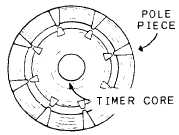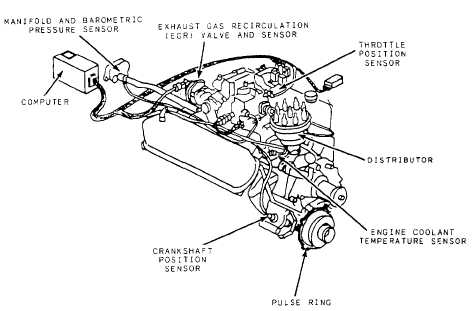
Figure 4-37.-High-energy timer and pole pieces.
coil pole piece (fig. 4-37). When the timer core teeth align with the pole piece, a voltage pulse is induced in the pickup winding. This pulse signals the module to activate the primary coil current, inducting high voltage in the secondary windings and ultimately firing the spark plug. The module automatically y controls the dwell period, stretching it as engine speed increases. Therefore, the primary current reaches its maximum strength at high engine speeds and reduces the chances of high-speed misfire. The secondary coil energy (35,000 volts) is greater than in conventional ignition systems which allows increased spark duration. The longer spark duration of the HEI system is instrumental in firing lean and exhaust gas recirculation (EGR) diluted fuel/air mixtures. The condenser within the HEI distributor is provided for noise suppression only.
COMPUTERIZED IGNITION SYSTEM
Today, minicomputers are being used to control many modern automotive systems. One example is Ford's electronic engine control system (EEC). This system consists of an electronic control assembly (ECA), seven monitoring sensors, a Dura Spark II ignition module and coil, a special distributor assembly, and an EGR system designed to operate on air pressure.
The ECA is a solid-state microcomputer consisting of a processor and a calibration assembly. Refer to figure 4-38 while studying the operation of this system. The processor continuously receives inputs from the seven sensors and converts them into usable information that is received by the calculating section of the computer. The processor assembly also performs ignition timing, does Thermactor and EGR flow calculations, processes this information, and sends out signals to the ignition module and control solenoids to adjust the timing and flow of the systems accordingly. The calibration assembly contains the memory and programming for the processor.
Processor inputs come from sensors that monitor manifold pressure, barometric pressure, engine coolant temperature, inlet air temperature, crankshaft position, throttle position, and EGR valve position.
Manifold Absolute Pressure Sensor
This sensor detects changes in intake manifold pressure that are caused by variances in engine speed, engine load, or atmospheric pressure.
Barometric Pressure Sensor
Barometric pressure is monitored by a sensor mounted on the fire wall. Measurements taken are

Figure 4-38.-Computer ignition components.
Continue Reading